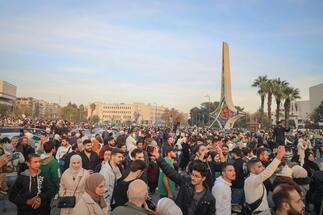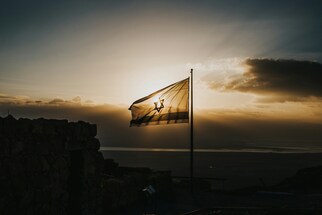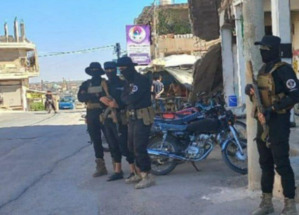-
Iran imposes curbs on UN nuclear inspections: State TV

Iran officially has begun restricting international inspections of its nuclear facilities, state TV reported Tuesday, a bid to pressure European countries and US President Joe Biden’s administration to lift crippling economic sanctions and restore the 2015 nuclear deal. UN nuclear
The state TV report gave little detail beyond confirming that Iran had made good on its threat to reduce cooperation with International Atomic Energy Agency inspectors.
“The law has gone into effect from this morning,” said Iranian Foreign Minister Mohammad Javad Zarif, reiterating that Iran would no longer share surveillance footage of its nuclear facilities on a daily and weekly basis as in the past. “We had informed the IAEA about implementation of the law.”
The Atomic Energy Organization of Iran, Tehran’s civilian nuclear agency, has promised to keep the footage for three months, then hand it over to the IAEA — but only if granted sanctions relief.
Iran announced its plans to cease implementation of the so-called “Additional Protocol,” a confidential agreement between Tehran and the IAEA reached as part of the landmark nuclear accord. The agreement grants the UN inspectors enhanced powers to visit nuclear facilities and watch Iran’s program.
Nearly three years ago, former US President Donald Trump unilaterally withdrew America from the nuclear accord and reimposed sanctions on Iran that have squeezed its economy.
To create leverage over Washington, Iran has announced gradual breaches of the 2015 agreement over recent weeks. The country has started enriching uranium up to 20 percent purity, a technical step away from weapons-grade levels, as well as spinning advanced centrifuges and producing uranium metal.
In a show of defiance, Cabinet spokesman Ali Rabiei outlined further developments in Iran’s nuclear program on Tuesday. Over the last three weeks, he told reporters, Iran has installed an additional 148 high-tech IR2-m centrifuges at its Natanz nuclear enrichment facility and its fortified nuclear complex at Fordo, bringing the total number of centrifuges to up to 492.
Another set of 492 centrifuges will be installed in the coming month, he said.
He added that Iran has installed two cascades of even more advanced centrifuges at its nuclear enrichment facilities, but did not specify where.
On Monday, Supreme Leader Ayatollah Ali Khamenei also signaled Iran would refuse to capitulate to US pressure over its nuclear program. Khamenei said that Iran could enrich uranium up to 60 percent purity if necessary, but reiterated the country forbids nuclear weapons. Tehran has long insisted that its nuclear program is for peaceful purposes, such as power generation and medical research.
Tuesday’s escalation followed IAEA Director-General Rafael Grossi’s emergency weekend trip to Tehran to negotiate the inspection restrictions. As part of a temporary deal, Grossi said the agency would maintain the same number of inspectors on the ground.
But Iran’s curbs would affect inspectors’ ability to conduct so-called “snap” inspections of nuclear sites, Grossi said. Iran blocking access to IAEA cameras also means the agency can’t monitor Iranian actions when those inspectors aren’t physically at a site. UN nuclear
source: The Associated Press
Image source: AFP
You May Also Like
Popular Posts
Caricature
BENEFIT Sponsors Gulf Uni...
- April 17, 2025
BENEFIT, the Kingdom’s innovator and leading company in Fintech and electronic financial transactions service, has announced its sponsorship of the “Innovation and Sustainable Technology Solutions Competition (GU - IST Solutions), hosted by Gulf University at its main campus.
This strategic sponsorship reflects BENEFIT’s active role in advancing technological innovation and fostering sustainable solutions to future challenges. It also seeks to empower Bahraini youth by enhancing their skills, capabilities, and competitiveness in innovation and solution development—contributing meaningfully to the broader goals of sustainable development across all sectors.
As part of BENEFIT’s active involvement in the competition, the company has announced that Hanan Abdulla Hasan, Senior Manager of Public Relations and Communication, will serve on the competition’s supervisory committee. Her upcoming participation reflects BENEFIT’s forward-looking commitment to championing academic and professional excellence.
Commenting on the occasion, Hanan Abdulla Hasan, Senior Manager of Public Relations and Communication at BENEFIT, said, “We are privileged to support this pioneering initiative, which aligns seamlessly with BENEFIT’s enduring commitment to fostering innovation and nurturing the potential of Bahrain’s youth. Our participation is rooted in a deep sense of social responsibility and a firm belief in the pivotal role of innovation in shaping a sustainable future. Through such platforms, we seek to empower the next generation with the knowledge, skills, and foresight required to develop impactful solutions that address future challenges, in line with the United Nations Sustainable Development Goals 2030.”
Dr. Aseel Al Ayash Dean of the College of Engineering in Gulf University commented, “We extend our sincere gratitude to BENEFIT for their generous sponsorship and support of the Innovation and Sustainable Technology Solutions Competition. This contribution plays an instrumental role in helping us achieve the strategic goals of this initiative, namely, cultivating a culture of innovation and sustainability, encouraging efforts that address the imperatives of sustainable development, and enhancing the practical and professional capabilities of our students and participants.”
The event will bring together a diverse spectrum of participants, including secondary school students, university undergraduates, engineers, industry professionals, entrepreneurs, academic researchers, and subject matter experts representing a wide range of disciplines.
The competition seeks to inspire participants to develop and present innovative, sustainable technologies aimed at addressing pressing environmental, social, and economic challenges. It encourages the formulation of business models that integrate advanced technological solutions with core principles of sustainability. Moreover, it serves as a platform for emerging leaders, entrepreneurs, and innovators to contribute to the advancement of the Sustainable Development Goals, promote the ethos of responsible technology, and demonstrate its transformative potential across various sectors.
Attendees will have the opportunity to view a series of project presentations submitted by participants, covering diverse areas such as eco-friendly product design, smart and sustainable innovations, renewable energy technologies, water conservation and management, waste minimisation and recycling, green architectural solutions, and sustainable transportation systems. Outstanding projects will be formally recognised and awarded at the conclusion of the event.
opinion
Report
ads
Newsletter
Subscribe to our mailing list to get the new updates!






















